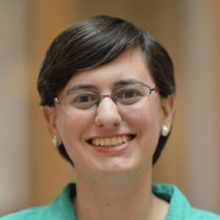In 1925, successful novelist and notorious socialite F. Scott Fitzgerald published a book that for the last hundred years has come to encapsulate the heady decade before the Great Depression. At the time, no one much liked it. The New York World called it a “dud” and a reviewer at the Brooklyn Daily Eagle challenged readers to, “Find me one chemical trace of magic, life, irony, romance or mysticism in all The Great Gatsby.” Fitzgerald’s first novel, This Side of Paradise, had made him rich, but The Great Gatsby sold only 20,000 copies in the first year.
Today, of course, Gatsby is regularly lauded as the Great American Novel. The story of destroyed hopes has spawned movies, memes, comics, and thousands of high school English essays on the meaning of a green light. Today, researchers can find a first edition copy of the book amongst the collections of the Penn Libraries’ Kislak Center. And starting last week, readers all over the world can also page through it virtually in our digital repository and on HathiTrust.
That’s because on January 1, The Great Gatsby became one of the thousands of works published in 1925 to enter the public domain. Starting this year, anyone is free to acquire, share, adapt, remix, and otherwise consume these creative works. Want to put the whole novel on the internet? You can—and the Penn Libraries already has! Think you can make a film adaptation better than Baz Luhrmann’s? You no longer need to pay royalties to do so! Inspired to publish a novel about Jordan Baker’s tennis career? No one can stop you.
This is the third year in a row that librarians have been able to celebrate what has come to be known as “Public Domain Day.” Traditionally, works are supposed to enter the public domain 75 years after publication, but a 1998 law extended the copyright on works published after 1922 for an additional 20 years. That means that works published in 1923 entered the public domain in 2019 and those published in 1924 did so in 2020. Now it’s 1925’s turn—and what a year that was!
Back in 2015, the BBC said 1925 “may well be literature’s greatest year.” Novels like The Great Gatsby, Mrs. Dalloway, and An American Tragedy defined both their era and the whole of the 20th century. Movies had become a cultural force—1925 saw the release of Buster Keaton’s Go West and the appropriately named Lovers in Quarantine, among others. The songs of Duke Ellington, Bessie Smith, and “Fats” Waller, many of which join the public domain this year as well, have fundamentally shaped pop music to this day.
Beyond serving as an opportunity to celebrate influential works of art, why does Public Domain Day matter? When the public domain floodgates first opened in 2019, John Mark Ockerbloom, the Penn Libraries’ Digital Library Strategist and Metadata Architect, wrote, “I now find myself feeling much like I did when the Red Sox broke their World Series drought in 2004, or the Eagles finally won a Super Bowl [in 2018].” As noted by the Center for the Study of the Public Domain at Duke University, adding works to the public domain fuels creativity, allows libraries like ours to undertake new preservation efforts, makes education more equitable, and improves opportunities for scholarly research.
Want to learn more about works that have entered the public domain? Check out Ockerbloom’s Twitter account, where he has been sharing interesting facts about these works using the hashtag #PublicDomainDayCountdown. You can see his tweets aggregated on his blog as well. Here are a few of them, each with a connection to the Penn Libraries. Along with being available through our libraries, these works can now be accessed through Hathi Trust and the Internet Archive.
An American Tragedy by Theodore Dreiser
This massive, sweeping novel was based on a notorious murder, trial, and execution that happened in Upstate New York two decades earlier. The Penn Libraries’ collection of Dreiser's papers charts the novel's development through early manuscripts, press clippings, and letters.
"Hollow Men" by T.S. Elliot
Today, Hollow Men is probably known better by its final lines than by its title—This is the way the world ends/This is the way the world ends/Not with a bang, but with a whimper. It first appeared in the form known today in a collection of poems published on November 23, 1925.
First edition in Penn Libraries.
Symphony no. 7 by Jean Sibelius
Librarian Richard Griscom spoke about his love for this twenty-minute symphony in our interview with him last month: “The musical ideas are condensed and compressed, and it takes a while to unpack, but on repeated hearings you begin to realize that one bit here shows up again later in a very different context, and it all starts to make more sense.”
Sheet music in Penn Libraries.
Songs by Bessie Smith, including "I Ain't Goin' to Play No Second Fiddle," "Tired of Voting Blues," and "Telephone Blues."
Known as "The Empress of the Blues," Bessie Smith was the most popular female blues singer of the 1920s and 1930s. She lived much of her life in Philadelphia and is buried in Mount Lawn Cemetery.
Recordings available in Penn Libraries.
Mrs. Dalloway by Virginia Woolf
Virginia Woolf first published what we now know as Mrs. Dalloway as a short story in 1923, and that version entered the public domain in 2019. But the full novel detailing the emotional distress of a woman preparing for a party wasn't published until 1925.


On January 1, The Great Gatsby became one of the thousands of works published in 1925 to enter the public domain. Starting this year, anyone is free to acquire, share, adapt, remix, and otherwise consume these creative works.
